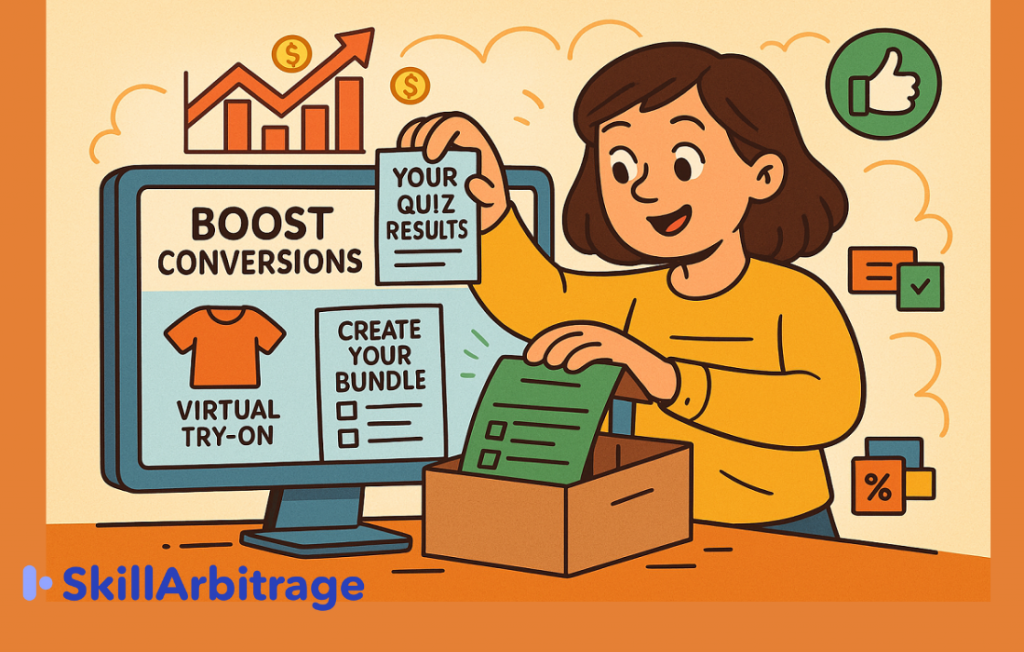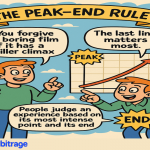This blog tells content writers, marketers and strategists how they can use the IKEA Effect to boost conversions. It offers tips and templates so that anyone can start leveraging IKEA Effect in their content immediately.
Introduction
I was slightly surprised when my younger sister wanted a study table, specifically from IKEA. I never understood the point of IKEA. It seemed like too much of a hassle. Why would you pay for furniture but still assemble it yourself? What was the appeal?
But when the table arrived, she seemed perfectly happy assembling it.
It was not my sister alone. Many people feel more invested when they co-create something. This is a notable marketing phenomenon, known as the IKEA effect.
Have you ever spent two hours assembling a chair from IKEA? You slogged over it and fumbled a bit, but when you had finished, you felt proud. You not only bought a chair but also accomplished something in the process.
Now here’s the twist: it’s not just furniture. This same phenomenon can dramatically boost how people interact with your product, your service, and even your content.
The IKEA Effect is a behavioral psychology principle that says people place significantly more value on things they’ve helped build. When users put in even a small amount of effort, their commitment and emotional attachment skyrockets.
Here’s the exciting part: copywriters and marketers can leverage this to boost conversions, especially in India’s crowded digital market.
When your users do a little work, they reward you with loyalty.
What is the IKEA Effect?
The IKEA Effect refers to the increased value consumers place on products they partially create. When people invest time and effort into building or customizing something, they feel a sense of ownership and pride. This makes them more committed to the outcome and more likely to follow through with a purchase.
Research showed that people valued furniture they assembled themselves more highly, even if poorly built, due to the emotional attachment from their effort.
In digital marketing, this means that when users personalize your product, adjust inputs, or answer questions, they’re more likely to convert.
Why does this work in India
In high-choice environments like India’s digital economy, users face constant decision fatigue. Every time consumers want to order a simple sandwich, they’re flooded with countless options from a dozen food delivery apps. This overwhelms them.
Interactive journeys simplify decision-making while allowing users to feel in control. This is where the IKEA Effect comes into play.
Moreover, with increasing competition in D2C, SaaS, fintech, and edtech sectors, brands that make users feel like collaborators, not just buyers, stand out. A lot of famous Indian brands already use it.
Indian brands are already using the IKEA effect
1. Lenskart – helping users design their look
What they offer:
- Virtual try-on tools
- Face shape-based recommendations
- Style quizzes for frames
Why it works:
Simply by giving a few constructive options, Lenskart sets itself apart from its competitors. Users don’t just browse. They try different frames, upload selfies, and filter by preferences. This increases both time spent on the site, and emotional investment.
By the time the CTA appears, the user already feels like the chosen product is uniquely “theirs.”
2. D2C skincare brands – personalized regimens based on quizzes
Brands like The Derma Co., Minimalist, and SkinKraft use diagnostic quizzes to recommend personalized skincare routines. This makes the consumer feel that this is a solution specifically tailored to their needs.
The process is straightforward and consists of only three steps.
The 3 step process:
- Ask users about skin type, concerns, age, climate
- Use answers to generate a “custom plan”
- Reinforce this personalization in the product copy
Why it works:
When the brands ask, users invest time describing their problems. Then the brand responds with a personalized plan and they feel understood and involved. The solution isn’t generic, instead, it’s something they helped create. It’s something that they now need, rather than merely want.
This increases opt-in rates, achieves higher AOV (average order value), and builds stronger customer retention.
3. Insurance aggregators – make-your-own-policy journeys
Insurance platforms like PolicyBazaar turn complex, boring insurance purchases into guided DIY experiences. Users compare policies and ultimately choose the plan best suited for them.
Interactive flow includes:
- Age, lifestyle, coverage needs
- Compare plans
- Build a custom policy
Why it works:
The act of making choices builds trust and perceived ownership. When users see a final recommendation, they are more confident in purchasing.
Proof of performance
Let’s look at some performance outcomes from the Indian brands we were discussing.
- Lenskart’s virtual try-on tool increased session duration by 25% and conversions by 15%.
- The Derma Co. increased email opt-ins with its quiz funnel.
- PolicyBazaar reported a lift in quote-to-sale conversion with dynamic policy builders.
These aren’t vanity metrics. They are real indicators of business growth driven by psychological ownership.
These results are no coincidence. The success of the IKEA Effect is a global phenomenon driven by definite psychological triggers.
Users don’t just “read” interactive copy. They use it, creating a deeper connection with your brand.
How to use the IKEA effect in your copywriting (with templates)
Now, let’s explore how you can integrate the IKEA effect in your copy using practical templates.
1. Quiz-based lead magnets
- Header: What’s Your Ideal Skincare Routine?
- Subheading: Take our 60-second skin test and get a customized product plan just for you.
- Question Copy:
- What are your top skin concerns?
- How sensitive is your skin to new products?
- How many steps do you prefer in your routine?
- Results Page CTA: Your Personalized Plan is Ready. [Download Now] [Start 7-Day Free Trial] Tips:
- Use a progress bar to increase completion rates
Offer a free resource at the end to increase signups In India’s collectivist culture, where trust is generated from shared experiences, interactive tools like quizzes feel like collaborative decision-making, making users more likely to commit.
2. Build-your-own bundles
Best for: E-commerce, health supplements, fitness brands, fashion, home décor
Template
- Header: Build Your Own Bundle
- Step 1: Choose your goal
- Step 2: Pick your core product
- Step 3: Add-on boosters (Optional) [Checkboxes with short descriptions]
- CTA: Your Custom Ritual is Ready. Save 15% When You Buy the Bundle Today.
- Show visuals that update in real-time
Offer a pricing incentive for bundled purchases. The Indian market is price-sensitive and value-conscious. Here, consumers prioritize ‘paisa vasool’ (value for money) above all. Build-your-own bundles empower users to craft solutions tailored to their budgets and needs.
3. Calculators
Best for: Finance, SaaS pricing, productivity tools, freelance services
Template
- Header: Build Your Own Bundle
- Step 1: Choose your goal
- Step 2: Pick your core product
- Step 3: Add-on boosters (Optional) [Check-boxes with short descriptions]
- CTA: Your Custom Ritual is Ready. Save 15% When You Buy the Bundle Today.
- Show visuals that update in real-time
Offer a pricing incentive for bundled purchases. The Indian market is price-sensitive and value-conscious. Here, consumers prioritize ‘paisa vasool’ (value for money) above all. Build-your-own bundles empower users to craft solutions tailored to their budgets and needs.
Copy leveraging the IKEA Effect can not only drive conversions but also be used in all stages of a marketing funnel, by only adapting the templates.
Where in the funnel should you use the IKEA Effect copy?
You can use IKEA Effect-inspired copy in these specific parts of your marketing funnel.
Or you can use it only in the CTAs by simply tweaking them to turn into conversion engines.
How to tweak your CTAs to drive conversions with the IKEA effect
Instead of: Choose a Plan
Use: Build Your Own Plan
Instead of: See Pricing
Use: Calculate My Cost
Instead of: Buy Now
Use: Complete My Custom Combo
These small changes signal control, ownership, and effort—which make users more committed to completing the action.
Want to know how you can make your copy even more effective? Use these easy tools,
Tools to create interactive experiences (no-code options)
You don’t need a developer to implement IKEA Effect tactics. Here are easy-to-use tools you can use to start building content powered with the IKEA Effect right now :
These platforms integrate easily into websites and landing pages, even for solo marketers or small teams.
Recap: How to implement the IKEA effect in your copy
Here is a small recap of what we have been discussing till now:
Final thoughts
The best copy isn’t just written, it’s co-created.
The IKEA Effect teaches us that when users participate, they invest emotionally. They become collaborators, not just consumers.
That’s the secret behind why interactive experiences work so well, and why the future of conversion copywriting lies in letting users do just a little bit of work.
Not only do they convert more, but they remember you more. They trust you more. And they’re far more likely to return. Start using the templates and the CTAs now, and let me know in the comments how it went.







 Allow notifications
Allow notifications
